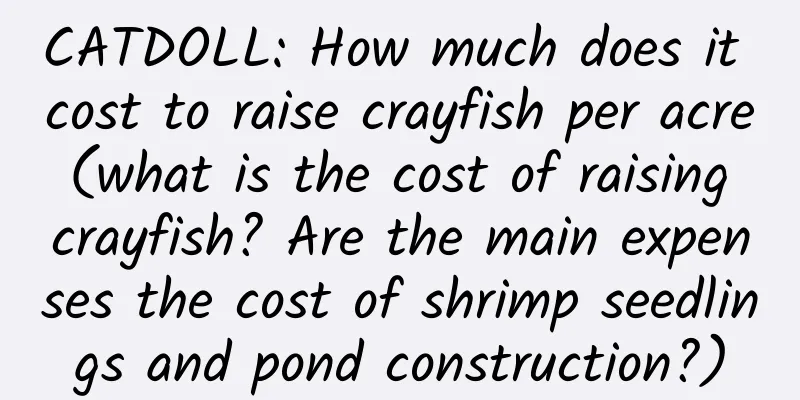CATDOLL : CATDOLL: What is centipede breeding technology?

|
1. Breeding environment. The most suitable growth environment for centipedes is 29℃ ~ 32℃. If it exceeds 40℃, their feeding and activity ability will be reduced, and they may even find caves to hide. If it is below 15℃, their activities will slow down and they will take a long time to lay eggs. Newly born baby centipedes cannot molt and are prone to death due to the low temperature. When the temperature drops to around 10℃, they will stop eating and go into a dormant state. When the temperature is high in summer, you should pay attention to heatstroke prevention and cooling. Plant grass and trees in the farm. It is best to set up a pergola or sprinkle water to cool down. For indoor breeding, open the doors and windows, and sprinkle water once in the morning and evening every day to maintain the humidity of the soil. Keep enough water in the waterer. In case of high temperature, it is best to move to the basement for temporary breeding. Centipedes like humidity, the relative humidity of the air is about 70%, and the humidity of the soil is 15% to 20%. If the breeding environment is too dry and the water content of the feed is insufficient, it will not only affect the centipedes' breathing and temperature regulation, but also affect the egg-laying and hatching rate. They may kill each other or even die from dehydration. However, excessive humidity is not good either. If the humidity of the soil in the habitat exceeds 40%, it is easy to be harmed by microorganisms, causing certain difficulties in molting and even causing physiological lesions. 2. Feeding management. Centipede food intake Under the appropriate temperature (25℃~32℃), an adult centipede eats about 1 gram each time, and a juvenile centipede eats about 0.1 gram. There are only 7 months of feeding time in a year, that is, from early April to mid-October every year, that is, the period from Qingming to Shuangjiang. The weather is slightly cooler in April and October. Although the temperature is higher than 10℃, it is still very unstable. The temperature may be high during the day, but the temperature is lower at night. The temperature in Northeast, Northwest and North China will be lower. Therefore, the centipede eats very little in these two months, and the activity is also very small. When artificially raised, feed once every 3 days. From May to September, the temperature is higher, and the centipede enters a normal state of activity and eating. Especially from June to August when the temperature is the highest, the centipede is most active and eats a lot. At this time, it should be fed once a day. Feeding time should be between 7 and 9 in the evening. The next morning, the leftover feed should be cleaned out in time to prevent some feed from spoiling at high temperatures, but live feed insects do not need to be cleaned out. In order to control the amount of feed and avoid excess feed from rotting and spoiling in the trough, you can feed according to the stocking density of centipedes and the size of centipedes. Generally, more feed should be given to those with high stocking density, and more feed should be given to adult centipedes before laying eggs because they have a large appetite; young centipedes have a small appetite, so less feed should be given. 3. Disease prevention and control. Green muscardine disease From mid-June to the end of August, due to climate change, high temperature and high humidity, centipedes are infected with green muscardine and are prone to this disease. Infected centipedes mainly develop small black spots on the skin of the joints in the early stage, and then the body surface loses its luster, and eventually die of weight loss due to refusal to eat. Grind 0.6 grams of motherwort, 0.25 grams of oxytetracycline, and 0.25 grams of chloramphenicol into powder, mix with 400 grams of feed and feed the sick centipedes until they recover. Centipedes with gastroenteritis usually suffer from this disease during the rainy and low-temperature period after autumn. In the early stage of the disease, the centipede's head is purple-red, the poison hook is fully open, and it does not eat or eats little. It dies 5 to 7 days after the onset of the disease. Grind 0.5 grams of sulfa tablets and mix them with 300 grams of feed; mix 0.25 grams of chloramphenicol with 300 grams of feed, and feed them every other day. In the early stage of shelling disease, the fish will be restless and crawl back and forth; in the later stage, the fish will be weak and slow in movement; and finally die from not eating or drinking. Use 0.25g of oxytetracycline, 0.6g of motherwort, and 1g of calcium tablets, grind them into fine powder and mix them with 400g of feed. Feed them for 10 days and the fish will be cured. 4. Breeding management. (1) Third-instar centipede. The life span of centipedes is only 6 years. After sexual maturity, they usually mate in the early morning after rain in March to May and July to August. They start laying eggs 40 days later. Female centipedes lay fertilized eggs on their backs so that they can hatch in time. Each female centipede takes 2 to 3 hours to ovulate, and lays 30 to 60 eggs each time. The surface of the eggs is rich in mucus, and the eggs stick together to form egg masses. The gonads of third-instar centipedes and adult centipedes are mature. During the period from the beginning of summer to the beginning of autumn every year, the centipedes with eggs lay eggs and hatch them. Centipedes consume a lot of nutrients during the egg-laying and hatching period, so they should be fed enough feed after egg-laying and hatching, just like before egg-laying. The suitable temperature for the growth and development of third-instar centipedes and adult centipedes is 25℃~32℃, and mating, egg-laying and hatching are mostly carried out within this temperature range. If the temperature is lower than 20℃, the growth and development will be inhibited, and mating and egg-laying will stop. Pregnant centipedes will also delay laying eggs due to the low temperature, and even those that are hatching eggs will extend the hatching time. If the temperature is too high, the eggs will be burned and the centipedes will lose a lot of water and die. The relative humidity of air required by third-year centipedes and adult centipedes is slightly higher, generally 90%, and the humidity of nest mud is 20% to 30%. The humidity of air and nest mud directly affects their appetite, egg-laying period, egg-laying rate and hatching rate. If they are in a dry environment for a long time, their growth will stagnate or the eggs will lose water and shrivel, affecting the reproduction of offspring. If the humidity is high and it is damp for a long time, it is not conducive to their growth and reproduction. It is easy for the eggs to mold and rot and promote the reproduction and spread of pathogenic microorganisms, causing fungal diseases and leading to death. Therefore, in daily feeding management, when humidity changes are found, they should be adjusted in time. The stocking density of third-year centipedes and adult centipedes should not be too high, generally 400 to 500 centipedes per square meter. During the breeding process, if individuals are found to be about to molt, they should be isolated in time, because the individuals that have just molted have no resistance and are easily eaten by other centipedes. At the same time, it is also necessary to isolate the egg-laying and hatching centipedes and separate the young centipedes. (2) A centipede. Female centipedes should be picked out 3-4 days before laying eggs and raised separately to eliminate the interference of non-laying centipedes and improve the hatching rate. Artificial nest hatching methods can be used: one is to use a bottomless can with a diameter of about 10 cm, with some small holes on the wall for ventilation, insert it into the soil, cover the female centipede about to lay eggs, cover the mouth of the can with cardboard, and one can hold one female; the other is to use a glass canning bottle with a lid, drill some holes on the lid for ventilation, put thick moist soil in the bottle, put the centipede about to lay eggs in, and one can hold one centipede. After laying eggs, female centipedes will not eat or move during the 60-day egg-holding and incubation period, and will only rely on the nutrients accumulated in their bodies to maintain their life activities. Therefore, the amount of feed should be increased before the female centipedes are pregnant with eggs, and the types of feed should be adjusted to encourage the female centipedes to eat more, so that they can store a large amount of nutrients in their bodies for consumption during the egg-holding and incubation period after laying eggs. Only when the female centipedes have enough nutrients stored in their bodies can they successfully complete the task of egg-holding and incubation, and prevent the female from swallowing the eggs. If you feed the females who are holding eggs and incubating at this time, they may no longer incubate eggs after they get up to eat, so there is no need to feed them during this period. In addition, female centipedes will bring leftovers to their nests when they eat, and they may also eat the eggs when they eat these leftovers. In a breeding group, the female centipedes lay eggs at different dates. The difference between the early and late laying individuals can be one month. During this one month, there are some laying eggs, hatching eggs, and waiting to lay eggs. The feeding amount decreases from more to less until most of them lay eggs. Only a little feed is needed every night to ensure that the ones that have not laid eggs are fed. After about one month, the early laying female centipedes have completed the task of hatching eggs and raising young centipedes, and begin to move out of the nest. Female centipedes that have hatched from eggs are relatively thin, so they should be picked out and raised separately, and provided with nutritious and energy-rich feed to ensure that they get enough nutrients and recover their physical condition as soon as possible. (3) Young centipede. The young centipedes just separated from the female's embrace should be raised in an ordinary new enamel basin for a period of time before being transferred to the pond for breeding because of their small bodies. When raising them in the basin, first put 2 cm thick moist soil at the bottom of the basin. After the small centipedes are placed in the basin, put a tile that absorbs enough water at the bottom of the basin, and cover the basin with a plastic film with many small holes. One enamel basin can raise about 600 young centipedes. Special care should be taken when raising the early-stage centipedes that have just been separated from the female centipedes that have hatched from their eggs. The soil for raising them should be new, soft, clean and moist. Use a few clean sponges with several small holes drilled in them, soak them in a solution made of milk powder and glucose for a while, and carefully put them in an enamel basin in the evening. The small centipedes will climb onto the sponges, and after eating, they will drill into the small holes of the sponges to rest. The next day, clamp the sponge block into another enamel basin with the soil for raising it and tap it gently, and the small centipedes will fall down. After raising them in this way for 7 to 10 days, you can switch to feeding them with maggots, small earthworms, minced meat, and a little milk powder and glucose. When feeding, you can put the feed on a glass plate, put the small centipedes in the enamel basin at night and take them out in the morning. |
<<: CATDOLL: What kind of bees are black bees?
>>: CATDOLL: How to feed earthworms
Recommend
CATDOLL: How to catch eels, eel catching skills
1. How to catch eels and techniques for catching ...
CATDOLL: How to keep a centipede if you catch one
Artificial breeding of centipedes Centipedes are ...
CATDOLL: What fertilizer do spiders need (what fertilizer is best for spiders)
1. How to raise spiders so that they will get clo...
CATDOLL: How to stock fish fry in a pond
1. How to put fish fry in the pond Hello, They ne...
CATDOLL: The goldfish's body has turned black all over. What's going on? A few days ago, white spots appeared on their bodies. The skin was almost worn off. I gave them more medicine. The medicine seller has to say
1. The goldfish's body has turned black all o...
What kind of food is better for Somali cats?
Good food for Somali cats: 1. For ready-made food...
CATDOLL: Why is rainbow trout called salmon? Because they look similar.
1. Because rainbow trout is very similar to salmo...
CATDOLL: He quit his job as a civil servant and started raising 800 million cockroaches with kitchen waste. Now it has become a business worth tens of billions. What is its value?
The cockroach, which has lived on Earth for 300 m...
CATDOLL: What do scorpions eat?
What do scorpions eat? Scorpions are carnivorous ...
Why do cats like to put their hands in their pockets?
Reasons why cats like to put their hands in their ...
CATDOLL: How long does it take for abalone to be farmed and sold? What do you think?
How long does it take for abalone to be farmed an...
CATDOLL: When is silkworm rearing and silk reeling carried out?
1. When did my country start raising silkworms? Y...
CATDOLL: How to feed koi so they grow fast
1. How to feed koi so that they grow fast If you ...
CATDOLL: How to prepare premix by yourself? Four steps to help you easily make your own feed!
Understand the role and composition of premixes P...
What is the best food for a three-month-old cat?
Diet for a three-month-old cat: 1. Three-month-ol...









